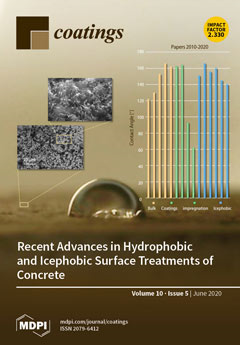This study explored the effects of Ti
3SiC
2 on the microstructure and properties of laser cladding coatings using X-ray diffractometer, scanning electron microscope, electrochemical workstation, and UMT-2 wear tester analyses. It was found that with the addition of Ti
3SiC
[...] Read more.
This study explored the effects of Ti
3SiC
2 on the microstructure and properties of laser cladding coatings using X-ray diffractometer, scanning electron microscope, electrochemical workstation, and UMT-2 wear tester analyses. It was found that with the addition of Ti
3SiC
2, the reinforcing phases in the composite coating were TiC, Ti(B,C)
2, honeycomb-like (Cr, Fe)
23C
6, and a novel composite ceramic with an “eyeball” structure, which had an inside core of Al
2O
3 and TiC outer surrounding structure. The microhardness, wear, and corrosion resistance of the composite coating were about 1.35, 2, and 4.3 times those of the original coating, respectively. The main wear mechanisms of the original coating were severe fatigue spalling and microcutting, while the main mechanisms of the composite coating were slight microcutting and the formation of the transferred film.
Full article





